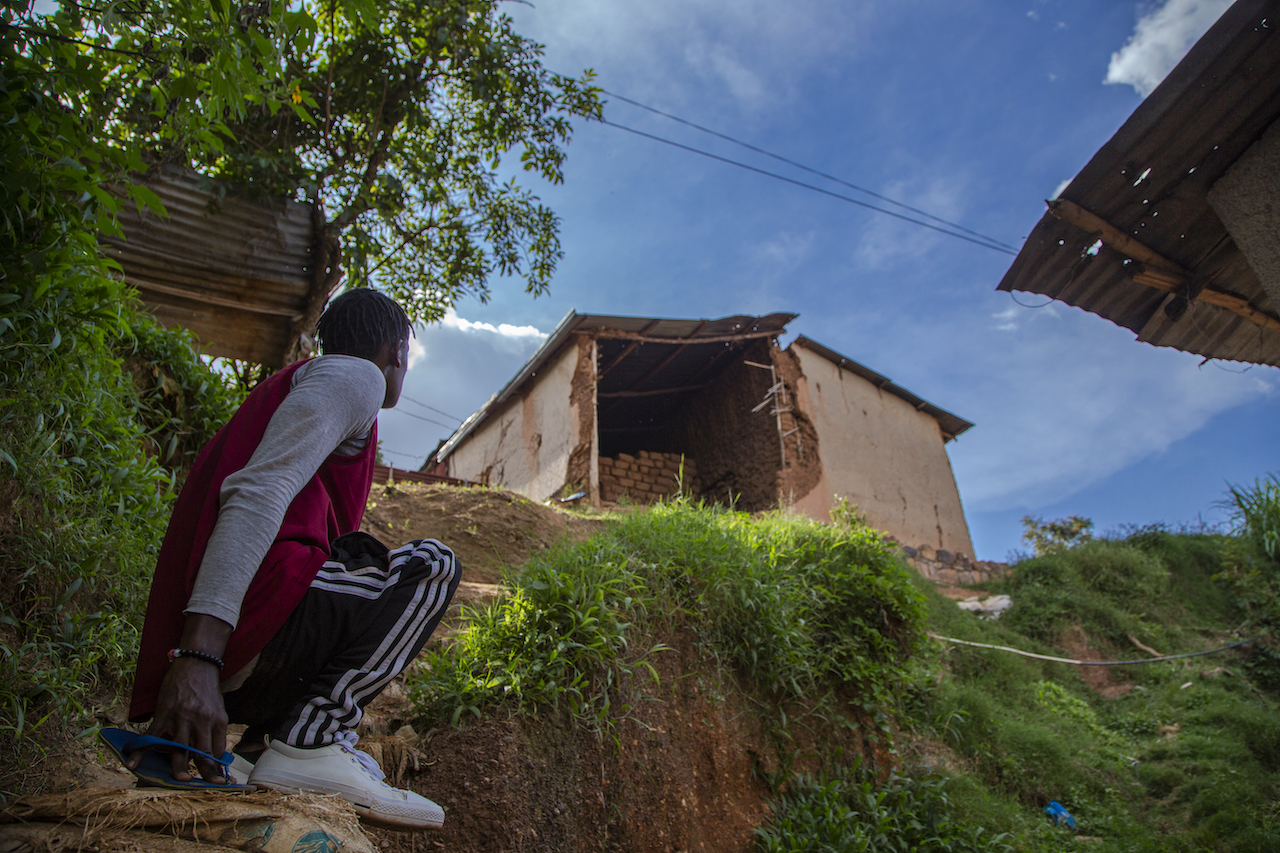
The SDGs and physiotherapy at UCN Denmark
Introduction
This course has been developed with funding from Physiotherapy Department and Fonden for Entreprenørskab to develop learning activities connecting physiotherapy to global goals and entrepreneurial mindset. The course is a two week, 3 ECTS elective course during the 3rd semester. You can download the course description in Danish here.
The global goals have been called the most ambitious plan for the future of the planet ever. We can contribute as physiotherapists. We’re setting out to find out how. The starting point is primarily three sub-goals to the following goals:
SDG #3: Good health and well-being, SDG #10: Reduced inequality and SDG #11: Sustainable cities
We focus on health promotion and prevention, inequality in health across countries and nationalities with examples from Denmark, Rwanda, and students’ own (travel) experiences.
Learning outcomes – the student can:
-
- Explain the global goals and the physiotherapy relevance in relation to selected global goals
- Explain the living conditions of social groups regarding health and inequality in health, gender, ethnicity in relation to lifestyle and civilization diseases
- Analyze and present an ongoing health professional effort in relation to one of the global goals with a focus on health promotion and prevention
- Via podcast, reflect on how efforts in relation to the global goals can be organized, taking into account a given health situation and societal context
- Reflect on how a health-promoting and preventive effort can be organized based on health pedagogical considerations centred around the individual’s physical, mental, and social possibilities, resources, and motivation
Learning activities
The course takes place on campus, online, in the city, forest and by bike. The teaching is organized with individual and group activities. We work with podcasts as a learning and evaluation method.
First, they were introduced to the framework and history of global goals. We focused on active learning activities during the course and in the following, I will give some examples of what activities we created to get into the topic.
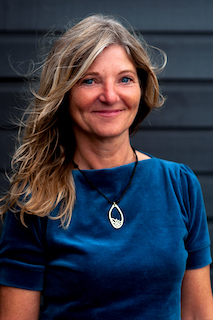
Betina Ringby (PT, MHSc)
Lecturer (UCN Denmark)
Innovation and entrepreneurship, health promotion, global goals and educational activities in Rwanda have been a priority in my work at UCN. Worklife through 30 years include working as a practitioner, clinical supervisor, consultant and lecturer. Certified restorative yoga teacher and nature therapist 2022.
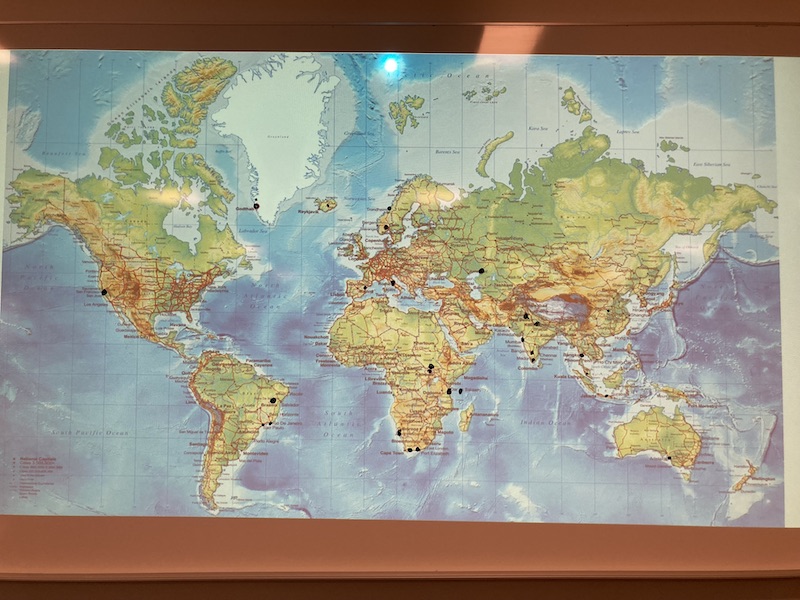
Worldview and world experiences
To engage students and address their knowledge we gathered in front of a world map and made individual reflections. Qs were:
- Why did you choose the elective course around the global goals?
- What are you particularly interested in?
- Where have you travelled or lived in the world?
- What experiences or impressions have made an impact on you?
- What do you think physiotherapy has to do with the global goals in relation to your experiences?
Reflections: Students have so many experiences, knowledge, and engagement to build on to, so a path relating to global goals was clear.
Environmental physiotherapy: what’s that?
In groups, students read and discussed this article and surfed the Environmental Physiotherapy Association website before reflecting on the Qs:
- What does the environment have to do with health and physiotherapy?
- What do you think environmental physiotherapy is about?
- How do you think physiotherapy can contribute to current and future social and environmental problems?
Reflections: An eye-opening activity for students. A whole new world of thinking differently about physiotherapy appeared.
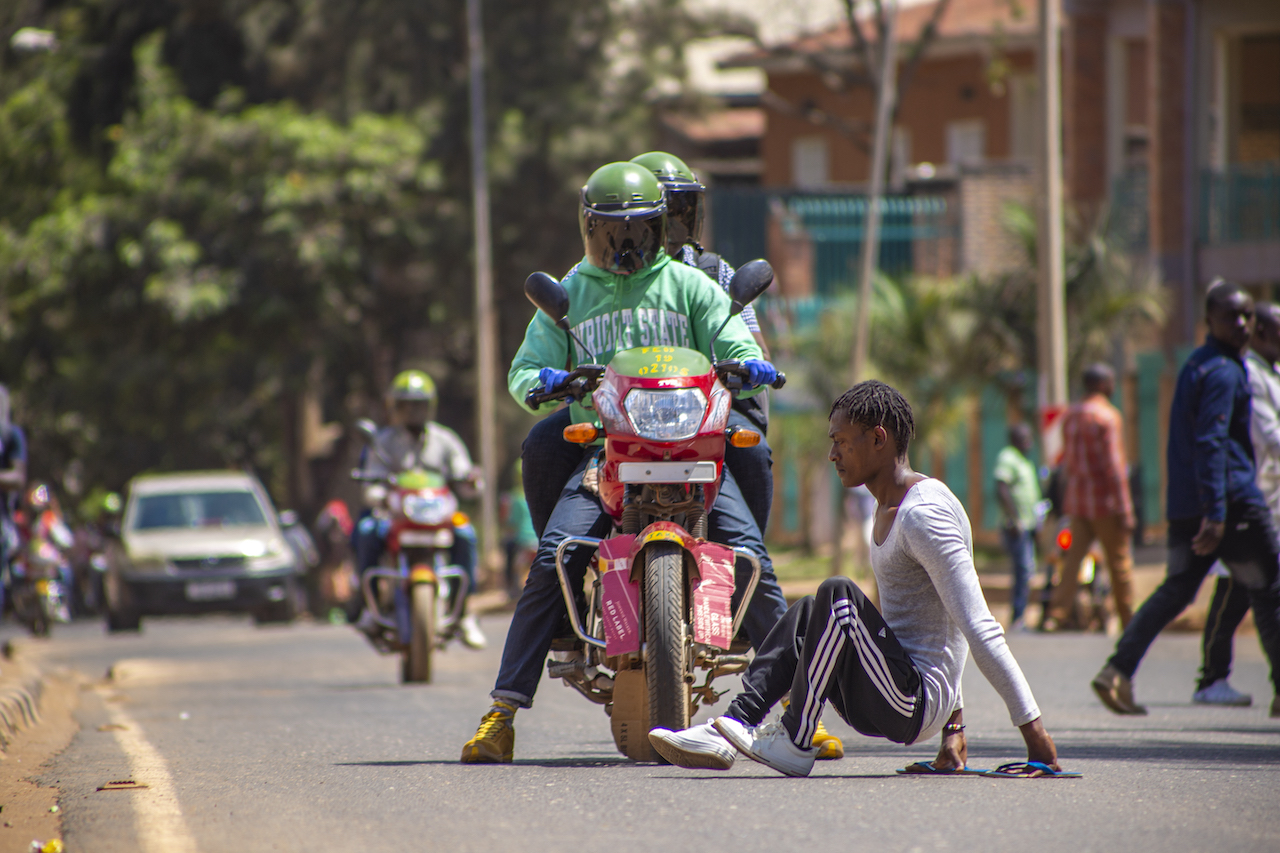
SDG #10 Insight through outlook: Rwanda
We introduced students to sub goals 10.2 and 10.3 about equal rights and social inclusion.
As you can see in the image below (in Danish) we also worked on materials from previous work done in Rwanda. Materials were documentaries, photo exhibitions, interviews with vulnerable young people with disability and a Danish physiotherapist working in Rwanda.
Reflections: In analyzing materials environmental issues became obvious to students. See photos used on this page.
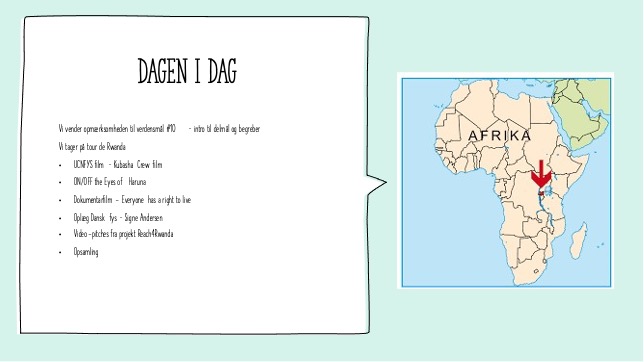
SDG #3 Health and wellbeing: mental health
Unfolding the Content of global goal #3 and diving into sub-goal 3.4 on mental health. Addressing what role, we might have as physiotherapists in relation to mental health and well-being. A day to get into the topic and relate to mental health.
Before meeting in a forest, students were asked to:
- take the mental ABC test (Developed by researchers at Curtin University in Perth and translated and adapted to Danish) and reflect on Qs:
-
- Did the test make me aware of something new in relation to myself and my own mental health?
- Did I become aware of something that I will focus on in relation to myself?
- Go for a walk in the city (duration:> 30 min.) Along the way, reflect on the following Qs:
-
- Smells, your heart rate level, sounds, disturbances, arousal, state of tension in your body and attention level (what are you preoccupied with?).
3. Then students biked from home to the forest. We focused on mental health and the forest as room for awareness. We spend 4 hours in nature. All brought an outside-walkable lunch.
-
- We introduced exercises focusing on primary and secondary senses. Smelling, listening, tasting, seeing, balancing, touching, feeling – breathing and creating awareness of our bodies in the present moment.
- We made a quiet walk through the forest focusing on the senses one by one, did sky-bathing, forest-bathing, and breathing exercises.
- A group assignment was introduced: Find your favourite forest-room and create 3 exercises to increase mental health – where you actively incorporate this ‘rooms’ ceiling, walls, bottom + and the use of our senses for a specific target group of your own choice
Reflections: Students proved to be creative but were also challenged not just to bring the fitness center exercises outside. Access to nature, inner and outer nature, environmental and global issues were reflected upon by students.

SDG #11 Sustainable cities and communities
We focus on subgoal 11.7: Providing access to safe and inclusive green and public spaces – for women and children, older persons, and persons with disabilities.
We met at the public library.
-
- We introduced to perspectives on urban development and latest trends in the area
- Students were asked to bring any kind of active means of transportation
- We provided students with a map of 4 different city and suburb routes to cover in about 3 hours (own choice which route)
Students were asked to analyze urban areas in relation to physical activity and health – and how we, as physiotherapists, can use urban spaces in our work with citizens and patients.
Points of analysis
Between destinations:
-
- Consider which elements are promoting or inhibiting active transport
- Consider the bike-ability, moveability and walkability of the route you choose
At the destinations:
-
- View the areas from the point of view of different age groups and functional levels (put yourself in their place)
- Discuss the design of the area (the layout of the area, the accessibility, the facilities, security, aesthetics, and coherence)
- Discuss how the area stimulates physical activity and movement? How could you use the area in a physiotherapeutic manner/intervention?
- Classify your experience via the ‘8 park grades’ with points from 1-8 in the rankings: Peaceful – spatial – wild – rich in species – safe – cultural-historical – open – peaceful
Reflections: Students got a new and more professional perspective of their own city and accessibility to different groups of people – or lack of access! They related also to Rwanda issues and realized that bike-ability, moveability and walkability is also related to environmental and cultural issues.
Narain, S., & Mathye, D. (2019). Do physiotherapists have a role to play in the Sustainable Development Goals? A qualitative exploration. The South African journal of physiotherapy, 75(1), 466. https://doi.org/10.4102/sajp.v75i1.466
Toner, A., Lewis, J.S., Stanhope, J., Maric, F. (2021). Prescribing active transport as a planetary health intervention – benefits, challenges and recommendations. Physical Therapy Reviews. https://10.1080/10833196.2021.1876598
Stanhope, J., Breed, M.F., Weinstein, P. (2020). Exposure to greenspaces could reduce the high global burden of pain. Environmental Research 187: 109641. https://10.1016/j.envres.2020.109641
Bratman, G. N., Hamilton, J. P., Hahn, K. S., Daily, G. C., & Gross, J. J.. (2015). Nature experience reduces rumination and subgenual prefrontal cortex activation. Proceedings of the National Academy of Sciences, 112(28), 8567–8572. https://doi.org/10.1073/pnas.1510459112
Kommt gerne in Kontakt / Get in touch
🇩🇰 Vi vil meget gerne høre fra dig og fortsætte samtalen om vores SDG-undervisningsinitiativ. Hvis du har feedback, spørgsmål eller ideer, som du gerne vil dele med os, så kontakt Betina Ringby via e-mail eller brug kommentarformularen nedenfor.
🇬🇧 We would love to hear from you and continue the conversation about our Physiopunk teaching initiative. If you have any feedback, questions or ideas that you would like to share with us, please contact Betina Ringby via email or use the comment form below.

0 Comments